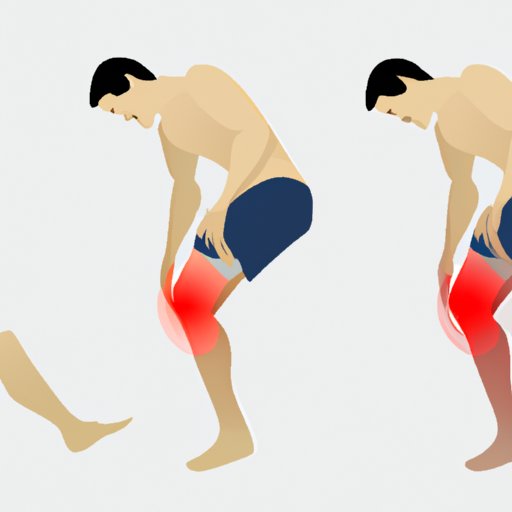Introduction
If you’ve ever experienced a sudden muscle cramp in your leg, you may have had a Charley Horse. Charley horses are a common and painful muscle cramp that often occur during physical activity or while sleeping. In this article, we’ll explore the causes of Charley Horses, preventative measures you can take to avoid them, and treatment options if you do experience one.
Causes of Charley Horse
Understanding what causes a Charley Horse is key to avoiding them in the first place. Some common causes include dehydration and electrolyte imbalances, overuse of muscles and fatigue, inactivity and poor circulation, and neurological disorders.
Dehydration and Electrolyte Imbalances
When you don’t drink enough water, your muscles can become dehydrated, which can lead to cramping. Additionally, when you sweat, you lose electrolytes like potassium, sodium, and magnesium which help regulate muscle function.
Overuse of Muscles and Fatigue
Overuse of a muscle or muscle group can lead to fatigue and cramping. This can happen during exercise or activities like standing for long periods of time.
Inactivity and Poor Circulation
Lack of physical activity or prolonged sitting can lead to poor circulation in the legs, which can also cause muscle cramps.
Neurological Disorders
Charley Horses can also be a symptom of neurological disorders such as Parkinson’s or Multiple Sclerosis.
Preventative Measures
Although Charley Horses can be painful and frustrating, there are steps you can take to prevent them from happening.
Stretching Exercises and Warm-Up Routines
Performing stretching exercises and warm-up routines before engaging in physical activity can help prevent muscle cramps. Specifically, leg stretches, ankle and foot flexes can be helpful in preventing Charley Horses.
Proper Hydration and Nutrient Intake
Drinking water and electrolyte drinks as well as consuming calcium and magnesium rich foods can also help prevent muscle cramps.
Massage Therapy and Foam Rolling Techniques
Regular self-massage techniques or trigger point release using foam rollers can help prevent muscle cramps.
Regular Exercise and Physical Activity
Staying active and exercising regularly can help prevent muscle cramps. Exercise helps increase blood flow and strengthen muscles, which can make them less prone to cramping.
Treatment Options for Charley Horse
Despite our best efforts, Charley Horses can still happen. Here are some treatment options to ease the pain.
Therapeutic Heat and Ice
Alternating between hot and cold therapy can help reduce muscle pain and soreness. Taking a hot bath or shower can help relax muscles, while cold compresses or ice packs can help reduce swelling and inflammation.
Topical Pain Relief and Muscle Relaxant Creams
Using over-the-counter pain relief medications or topical muscle rubs with ingredients like menthol or camphor can help alleviate muscle pain and soreness.
Mind-Body Approaches
Deep breathing and relaxation techniques, meditation, or visualization exercises can all help to reduce muscle pain and overall stress levels in the body.
When to Seek Medical Attention
While Charley Horses are often harmless, there are times when seeking medical attention may be necessary.
Ongoing and Frequent Charley Horse Episodes
If you’re experiencing frequent Charley Horses or they’re ongoing, you may need to speak with your healthcare provider.
Severe and Debilitating Muscle Cramps
Severe Charley Horses that cause significant muscle pain or loss of mobility should be addressed by a medical professional.
Pre-existing Medical Conditions
If you have pre-existing medical conditions that may contributing to muscle cramps, talk to your doctor to rule out any underlying issues.
Conclusion
Charley Horses can be painful and frustrating, but there are steps you can take to avoid them. Taking preventative measures like staying hydrated and stretching properly, combined with treatment options like hot/cold therapy and topical pain relief can help alleviate Charley Horse pain. If you’re experiencing ongoing or severe muscle cramps, it’s important to speak to a healthcare professional to rule out any underlying health conditions.
